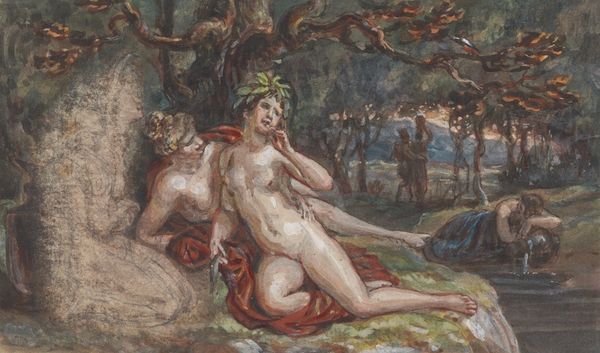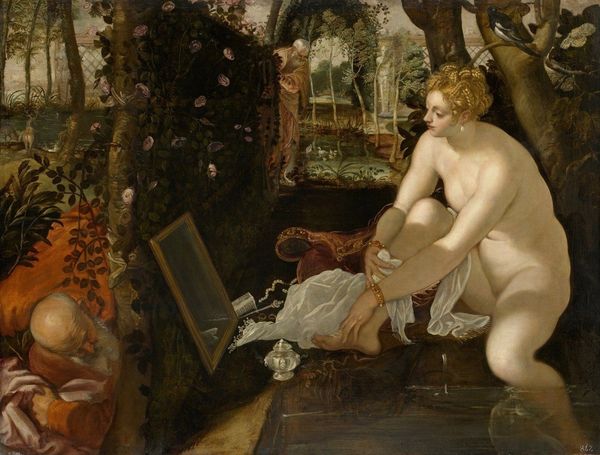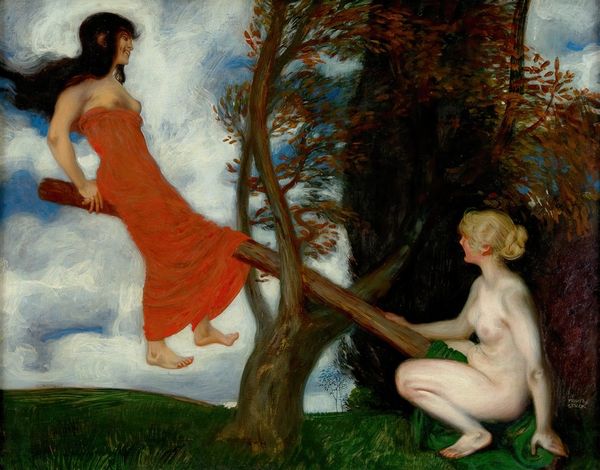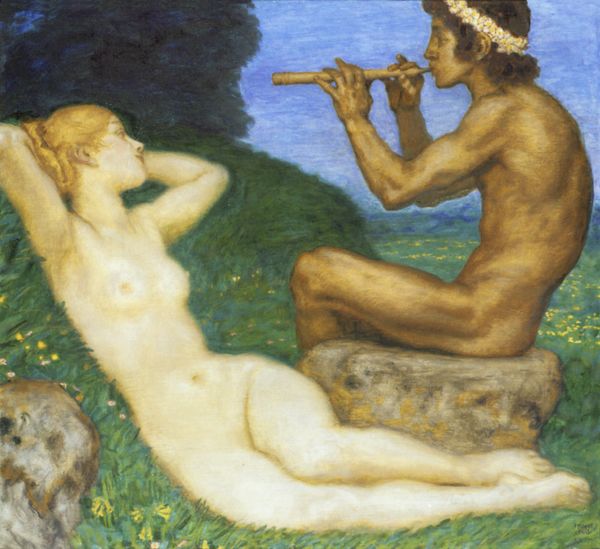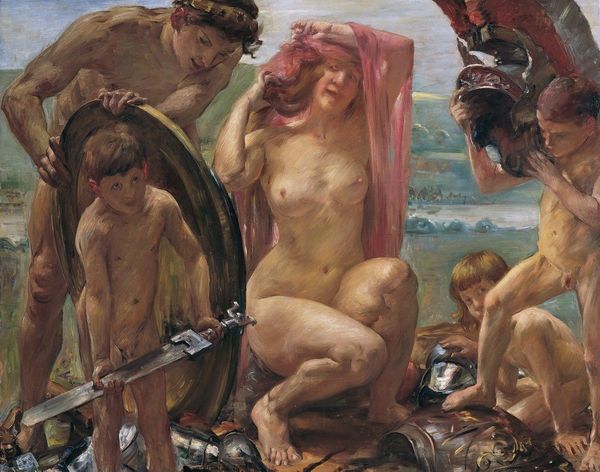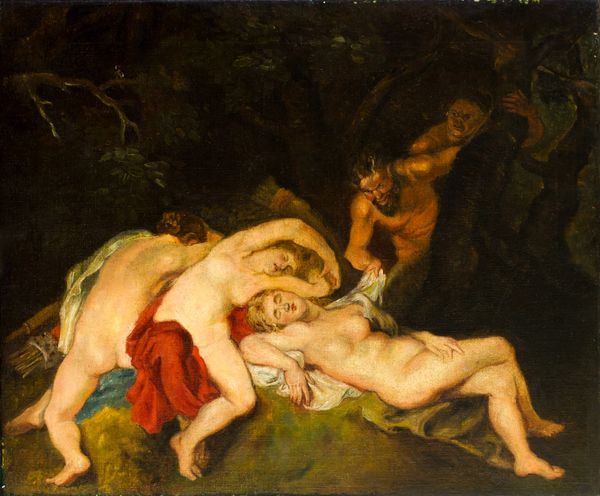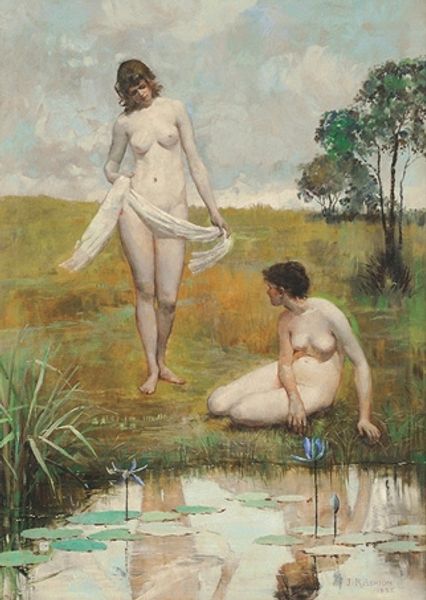
painting, oil-paint
#
portrait
#
gouache
#
allegory
#
painting
#
oil-paint
#
figuration
#
oil painting
#
neo expressionist
#
mythology
#
painting painterly
#
symbolism
#
nude
Copyright: Public Domain: Artvee
Curator: This is Jacek Malczewski's “Tobias with a Harpy,” created in 1909 using oil paint. What are your initial thoughts? Editor: Well, formally, I am immediately struck by the stark contrast between the figures: the pale, almost ethereal, winged youth on the right and the heavier, earthier, somewhat grotesque figure on the left. The lighting, too, sets a clear dichotomy, casting the harpy in a hazy almost dream-like atmosphere. Curator: Indeed. The dream-like quality speaks volumes about the symbolic landscape Malczewski constructs. The "harpy," often seen as a vile creature, here displays an almost tender, maternal posture, cupping its swollen breasts, burdened by a physical reality that clashes with the angelic form of Tobias. Could this embody the weight of earthly existence? Editor: The formal positioning certainly lends to that reading. Tobias is bathed in a cooler light, with sharper lines and clearer details. There's an almost sculptural quality to his face compared to the fluid form of the harpy. I find the contrast quite powerful, yet also disturbing. Is the harpy ashamed of her grotesque form, or perhaps, pained by its representation in the eyes of the angelic being? Curator: It evokes layers of psychological discomfort, doesn't it? Tobias represents the biblical figure whose sight was restored with the help of the archangel Raphael and the fish given to him as medicine, whose organs could be used to heal illness and ward of demons. By depicting this biblical story through a distinctly Symbolist lens, Malczewski seems to probe deeper into the nature of spiritual and physical redemption. Consider how these archetypal images speak to generational memory within Poland itself. The very notion of physical ugliness hiding profound truths or unseen battles against a demonic harpy. What could they mean to a people struggling for national identity at the time this painting was crafted? Editor: Interesting. Viewing through that sociopolitical scope provides greater perspective, I grant you. It also alters my initial formal interpretation to the possibility of a deliberately opposing arrangement, designed to make one question preconceived ideals regarding beauty and value, virtue and wickedness, etcetera. What an amazing piece! Curator: Yes, Malczewski challenges us to find empathy and meaning in the unexpected. It leaves us wondering: Where does redemption truly lie? What burdens do we all carry beneath the surface? Editor: Nicely put! Malczewski truly succeeded in crafting an unnerving and striking piece using allegorical forms. A testament to the ability of contrast, of stark division and of layered imagery to challenge fundamental precepts.
Comments
No comments
Be the first to comment and join the conversation on the ultimate creative platform.
